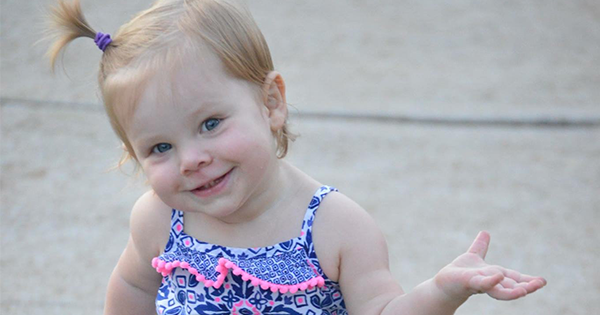 All parents want their children to be able to read, write and speak well, but it won't happen overnight. Literacy starts at birth and grows over many years.
All parents want their children to be able to read, write and speak well, but it won't happen overnight. Literacy starts at birth and grows over many years.
What is Literacy?
"Literacy" does mean being able to read and write, but it means much more. Literacy is being able to speak, and understand what you read, write and hear. Children who are "literate" know that sounds, letters, pictures and ideas go together and have meaning.
Start at Home
Do you remember when you first heard your baby cooing, or when you first saw your baby watching your face closely? She was cooing and you were holding her, looking her directly in the eyes and smiling. Was your baby paying attention to everything you said to her? Sure she was. That was you and your infant having a great conversation.
In everything you say to and do with your baby, you are teaching and your baby is learning. Just by doing the things you do naturally as a parent, you are creating the building blocks that lead to your child's literacy.
Make Literacy A Daily Habit
Things to Do with Your Infant
When you have an infant, you have a captive audience - take advantage of it! Your baby is using all five senses to learn: touching, smelling, tasting, seeing, and hearing. Engage all of your baby's senses in learning language and reading skills.
- Hold and touch your baby - make eye contact often: Touch is so important to helping your baby be calm and feel secure. Eye contact, the sounds you make, and your facial expressions are all ways of communicating, and your baby will understand that right away.
- Talk and sing: Your baby will take in everything that you say and become used to hearing familiar words used daily. You are also helping to develop your baby's listening skills.
- Talk to your baby during daily routines: Talk during bath time, feeding, play time, diaper changing. Talk about what you are doing. "Your diaper needs changing. Let's go over and get the things we need."
- Don't forget to sing: Sing your favorite songs, or other familiar children's songs or nursery rhymes. Don't worry if you don't have a "singer's voice." Your baby will love your voice (that's a promise).
- Let your baby see and touch things: Surround your baby with pictures, wall hangings, mobiles, and soft, chewable books. By seeing and touching books with words and pictures - and sometimes biting and chewing on them - your baby becomes familiar with reading and having books
- Read to your baby every day: Point at and read the signs you may see on doors, in the grocery store, at the park, or labels on food items. Point to and name pictures you see in your baby's room. There are written things all around us every day. Read books aloud to your baby every day. Let your baby hold the book. Choose large infant books with colorful pictures and fun words to build language.
Things To Do with Your Toddler
As a toddler, your captive audience is now on the move. You want to keep doing the same kinds of activities you have been doing all along - reading, talking, singing and playing - with some changes to keep up with your developing toddler.
- Keep reading: Choose books with interesting pictures and stories that emphasize letters, and sounds. Have a special, comfortable place where you can read together. Use your finger to show that words are read from right to left and top to bottom. Read with lots of enthusiasm in your voice and let your toddler turn the pages. Point to pictures and ask questions: "What's that?" and "Where is...?"
- Continue talking and singing: Talk about the things you and your toddler do together. "We're going up the escalator now." Point out signs and words you see while taking a walk. "Look. That big red sign says STOP." When your toddler speaks, listen and repeat what she said to encourage them. "You want more juice? Okay. Here it is." Remember to include songs and playful rhymes with your toddler's routine. Your toddler will love favorites such as "Itsy Bitsy Spider," "Peek-A-Boo," and "Five Little Monkeys."
- Have books and print everywhere: Keep books, magazines, newspapers, pictures, and their own drawings around where toddlers can see them. Put magnetic alphabet letters on the refrigerator. Spell out words and names with the letters. Let your toddler see his name in print. Point it out and say the letters with him. Keep things to "pretend write" with like washable crayons and markers, and paper within his reach.
Things to Do with Your Preschooler
Your preschooler has a lot of language and literacy skills now, and you want to provide fun ways to keep them growing.
- Take turns reading: When you are reading a story, ask open-ended questions that your preschooler can answer. "What do you think will happen next?" "Why do you think she did that?" Let your preschooler read with you and fill in the blanks. "Then Goldilocks said..." Be sure to choose books that have story lines that are easy to guess.
- Add to language: You can help your preschooler develop his language and thinking skills even more. Listen to what your preschooler has to say. Ask questions for more inform "How many leaves did you get?" Ask your preschooler to follow two-part directions. "Please go to your room and put your book on your table." Encourage your preschooler to talk to other children. Give your preschoolers words to use, like "Can I play with the ball?" "Would you like to help me build?"
- Make reading a routine: Have a set reading time when you and your preschooler read out loud every day. Bedtime is usually a good time for preschoolers and parents to read together. Make sure you read at least 15 minutes every day.
- Give lots of reading and writing material: Make sure there are a lot of magazines and books, paper, pencils, and crayons for preschoolers to use every day. Preschoolers will notice different words, and try to write the letters and words they see.
- Play language games: Play sound games with your preschooler - like words that rhyme: "Cat, rat, bat, hat, sat." Name words that begin with the letter "b": "Boy, bat, bee, bird."
Things to Do with Your Young School-Age Child
Children around 6 to 8 are bringing together their abilities to listen to and talk about stories, understand print, and use language that is rich and meaningful. You can continue to build on what your young school-age child knows by doing things like these at home:
- Make reading and literacy interesting and fun:
- When reading together, stop halfway through the story and ask your child to come up with a different ending.
- Have your school-age child go on a word hunt around the house. For example, have your child find three things around the house that start with the letter "b," then three things that start with the letter "t" and write them
- Find ways to get writing into everyday activities: dictate your grocery list and let your child write down the items you need.
- Work with your child's teacher on doing activities at home: Your school-age child's teacher will share ways they are working on literacy at school, many of which you can also do at home. Many schools have reading and writing programs for parents that you may find helpful.
- Help with homework: Homework-time is a good time to catch up with what your school-age child has done during the day. Talk with her. Ask your child questions about her activities during the day: Any new friends? What did you eat for lunch? How was music?
Check Your Child's Literacy
If you think your child may have a language or reading problem, don't hesitate to check into it. It is always best when problems like ear infections, vision issues, or learning delays are detected early. However, is important to remember that children, especially young children, develop at different rates. Some children need more time to develop skills, and will develop the skill with extra time. Talk with your child care provider or your child's teacher about any concerns you have. The only way to know if there is a physical or learning problem is to get an expert evaluation. Contact your child's doctor with any concerns you may have for an evaluation.
| The Play's the Thing
Playing with children is vital to their learning. Since parents are their children's favorite playmates, make the most of it. |
Is Your Home Full of All the Senses?
(Seeing, Hearing, Touching, Smelling and Tasting, and Touching) |
| Sing songs, play music, and dance with your child. | Do children hear music, talking, singing, laughter? |
| Use sock or hand puppets to act out a story. Let your toddler or preschooler use the puppets. | Can children reach and use books, magazines, crayons, paper? |
| Play make-believe and pretend you are talking to your child on the telephone. | Do children smell flowers or fruits or other scents that can be talked about? |
| Sing "Old MacDonald Had a Farm" and have your child come up with the animals or make the sounds of the animals. | Do children talk about the foods they eat, name them, describe their taste? |
| Do children see adults enjoying reading? |
Recommended Resources
There are many resources on reading and literacy for parents and families. A good place to start is by contacting your local expert - your child care resource and referral (CCR&R) center. They will be able to connect you to the literacy resources in your area. To find your local CCR&R, use our CCR&R Search Form. You can also visit your local library or contact your local school district or Department of Education for parent resources. Here are more internet sites on literacy you may find helpful.
- National Children's Literacy website: literacy tips, story time tips, educational activities, links to other resources
- Reading is Fundamental: information, articles, family activities
- BookPop.com: books online to read, listen to, and print out
The Daily Parent is prepared by NACCRRA, the National Association of Child Care Resource and Referral Agencies.
© 2012 NACCRRA. All rights reserved.





